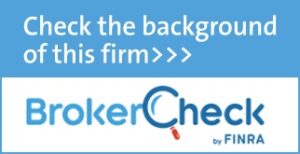High-Net-Worth Retirement Planning: 6 Ideas to Help You Get Your Finances in Order
Do you consider yourself a high-net-worth individual (HNWI)? Most people tend not to categorize themselves or see themselves as anything more than a spouse, parent, sibling, neighbor, boss, or business owner. However, society does classify people. HNWIs typically have at least $1 million in cash or assets that can be converted to cash easily, which could make planning for retirement more complex. Organizing your financial life can seem daunting at first, so here are 6 ideas to help you get started.
- Goal setting and money management
People of significant means are often interested in wealth preservation and growing their savings and investments. They are also noticeably concerned with the social impact their money will have on the world. According to the Oxford Press, wealth managers have shifted their focus from specific investment vehicles and strategies to a more holistic investment approach and goal setting. With goals in place, cash flow projections with inflation adjustments will be easier to design.
Historically, inflation averages around 2.5% annually; however, recently, this average has deviated. A financial professional can help you adjust your long-term strategy to include a rise in future inflation and assist with planning how to save enough money to stretch 30+ years without getting sidetracked by expenses such as college tuitions or weddings. Thirty-four percent of U.S. HNWIs claim retirement savings as a top goal, while 26 percent cite preserving wealth for their children as their highest priority. The reality is that creating a comprehensive plan can be challenging and careful planning is critical.
- Max out your retirement accounts
A 401(k) can be a powerful tool. If you have access to a plan through your employment, it may be beneficial to max out your 401(k) each year and take advantage of any match offered by your employer. The contributions are tax-deductible in the year that they are made. Any money left over can be put into an individual retirement account (IRA), health savings account (HAS), annuity, or another taxable account.
Some retirement accounts have required minimum distributions (RMDs) which, by law, you must withdraw once you attain age 73. In some cases, you may be able to delay RMDs until after you retire if you are still working at 73. Other complexities may arise if you inherit a retirement account, but consulting a financial professional can help you determine how to proceed depending on your relationship with the account holder, the type of account, and the decedent’s date of death.
The following accounts generally required minimum distributions after a certain age:
- Traditional IRAs
- SIMPLE IRAs
- Inherited IRAs (typically, however, there are some exceptions)
- Simplified Employee Pension IRAs (SEPs)
- Qualified stock bonus plans
- Qualified pension plans
- Qualified profit-sharing plans, which include 401(k) plans
Section 403(b) and Section 457(b) plans
- Stay up to date with tax law changes
- Estate and gift tax changes – As of January 1, 2023, the federal gift/estate tax exemption increased to $12,920,000, while the federal annual exclusion amount increased to $17,000 per person per parent. So, in effect, any individual may receive up to $34,000 per couple per year. Any amount over the $34,000 threshold can be put toward the lifetime exemption amount. Utilizing this benefit now may be a good idea as come January 1, 2026, unless Congress decides otherwise, these high exemptions are scheduled to sunset and return to the previous Tax Cuts and Jobs Act amounts.
- Modifications to charitable deductions – Currently, you are permitted to deduct 60% of adjusted gross income (AGI) for cash contributions held for over a year. For non-cash assets (property and long-term appreciated stocks), you generally deduct, at fair market value, up to 30% of your AGI for charitable contributions to an IRS-qualified 501 (c)(3) public charity if you select to itemize, which means forgoing the standard deduction. To account for inflation, the standard deduction is higher in 2023, up to $13,850 for individuals, $20,800 for head of household, and $27,700 for married couples who file joint returns. When you itemize, you should expect the sum of your itemized deductions to be greater than the standard deduction.
- Home sale exclusion for primary residence (Statue 26 U.S. Code 121) – Exclusion of gain on the sale of principal residence allows an exclusion of $250,000 (for individuals) and a $500,000 (for married couples) on home sale gains. People who own a home as a primary residence for at least two of the five years immediately before selling their home can qualify for capital gains tax exclusion. There are many moving parts and rules to this exclusion, and getting help from a financial professional is highly encouraged.
- The impact from Medicare surtax – Taxpayers that are above certain income thresholds of $125,000 (married and filing separately), $200,000 (single, head of household or qualifying widow or widower with dependent child), or $250,000 (married and filing jointly) may be subject to the Medicare surtax of an additional 0.9% tax rate. This can be a bit confusing. HelpAdvisor gives a good example; if you make $150,000 per year and are married and filing separately, you pay the standard 1.45% on the first $125,000 and 2.35% (1.45% + 0.9%) on the remaining $25,000.
- Other expenses that qualify for deductions along with charitable donations include:
- State and local tax
- Mortgage interest
- Medical and dental expenses
- Confirm and communicate your charitable goals
- An estimated 95% of HNWI gives to charity. A financial professional will want to know the details about your philanthropy efforts to help you get the most out of your giving strategy.
- How are you involved in a charity? Are you just a donor, or do you sit on the board?
- Why do you support the charities that you do?
- What types of assets do you typically donate?
- Have you always donated, or do you plan to wait and donate after you die?
- Create a withdrawal strategy
The question many retirees have is, “How do we deal with withdrawing our money when the time comes”? When it comes to your retirement, having a well-defined plan can help mitigate stress and frustration and potentially preserve wealth.
Some of the concepts you may want to explore include:
- Focusing on the lower tax brackets first – Typically, the income of a high net-worth individual will dip after you stop working. Depending on your age and other requirements, you can consider withdrawing from your IRA and paying the taxes at the lowest marginal tax rate, especially in that window before social security benefits kick in. And if you can, delay taking social security benefits until the maximum age, maximizing the amount you will receive.
- Review where your assets are located – Where are your stocks and bonds, for example, located? Are they in a tax shield IRA account where you may benefit because the bonds produce income taxed at ordinary income rates?
- IRA Conversion (Traditional IRA -> Roth IRA) and Recharacterization (Roth IRA -> Traditional IRA) – A potentially helpful strategy, albeit complicated, involves converting assets from an IRA to a Roth IRA in what is called a Roth conversion. You pay taxes on any assets converted, and money is withdrawn later tax-free. This strategy could be beneficial if you suspect you may be in a higher tax bracket in the future. A recharacterization is converting assets from a Roth IRA to a traditional IRA. So, for example, you convert assets to a Roth account, and the market happens to drop after your conversion. You can recharacterize those assets back to a traditional IRA, removing the tax liability resulting from the conversion.
- Don’t get bullied by the tax rates – You can’t predict the future of the tax rates and where you will be within them down the road. If taxes happen to go up, which they tend to do, then your tax-deferred money suddenly has less value than before since it gets taxed at a greater rate upon coming out of the account. Because this is possible, you should consult a financial professional and let them help you create a strategy that aligns with your financial goals.
- Seek professional financial guidance
Managing your finances in an ever-changing world can be overwhelming, especially if you are someone with significant wealth. It would help if you had someone to guide you along your financial journey. Working with a financial professional can help you mitigate risk, consider options you might not have considered before, and stay aligned with your financial goals. Schedule a meeting with a financial professional and get the help you need to start your retirement planning journey today.
Important Disclosures:
The opinions voiced in this material are for general information only and are not intended to provide specific advice or recommendations for any individual. To determine which investment(s) may be appropriate for you, consult your financial professional prior to investing.
Investing involves risks including possible loss of principal. No investment strategy or risk management technique can guarantee return or eliminate risk in all market environments.
Traditional IRA account owners should consider the tax ramifications, age and income restrictions in regards to executing a conversion from a Traditional IRA to a Roth IRA. The converted amount is generally subject to income taxation.
Contributions to a traditional IRA may be tax deductible in the contribution year, with current income tax due at withdrawal. Withdrawals prior to age 59 ½ may result in a 10% IRS penalty tax in addition to current income tax.
An annuity is a financial product sold by financial institutions that is designed to accept and grow funds from an individual and then, upon annuitization, pay out a stream of payments to the individual at a later point in time. Annuities are primarily used as a means of securing a steady cash flow for an individual during their retirement years.
This information is not intended to be a substitute for specific individualized tax or legal advice. We suggest that you discuss your specific situation with a qualified tax or legal advisor.
All information is believed to be from reliable sources; however, LPL Financial makes no representation as to its completeness or accuracy.
This article was prepared by LPL Marketing Solutions
Sources:
Medicare Tax Rate 2023 | HelpAdvisor.com
How to Receive a Charitable Tax Deduction | Fidelity Charitable
2023 Tax Rules and Tips for Easier, Cost-Effective Charitable Giving | UNICEF USA
Tax Considerations for High-Net-Worth Individuals in 2023 – CPA Practice Advisor
High-Net-Worth Retirement Planning Guide – SmartAsset
You Can Contribute Even More To Your 401(K) In 2023, But Should You? (forbes.com)
High Net Worth Individuals and Donor Advised Funds (aefonline.org)
Avoiding capital gains tax on real estate: how the home sale exclusion works (hackyourwealth.com)
Guardrails Approach: A Flexible Retirement Withdrawal Strategy (cnbc.com)
LPL Tracking #1-05374400



